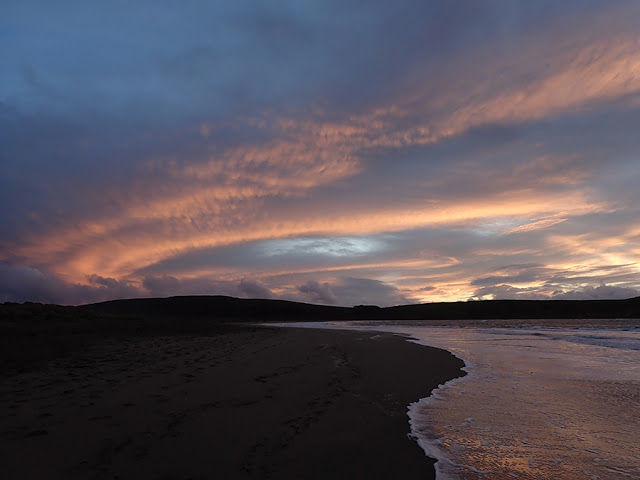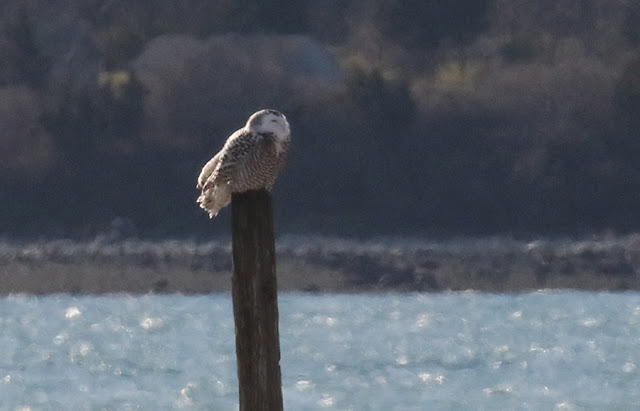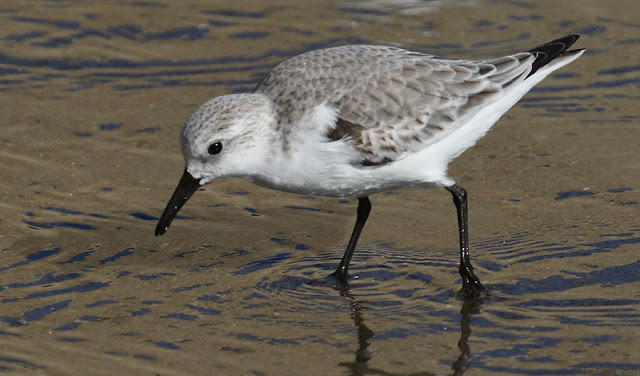Whew, it's hard to believe another 12 months have gone by. Here are a couple of 12-tentacled sea anemones to help welcome 2022.
Friday, December 31, 2021
12 for 12
Whew, it's hard to believe another 12 months have gone by. Here are a couple of 12-tentacled sea anemones to help welcome 2022.
Thursday, December 30, 2021
In the late afternoon
Roosting Sanderlings (Calidris alba) above, and a Snowy Plover (Charadrius nivosus) below, sheltering behind a small mound of sand. Both photographs from 25 December 2021.
Tuesday, December 28, 2021
20 for 70
Monday, December 27, 2021
Saturday, December 25, 2021
Friday, December 24, 2021
Christmas decoration
Thursday, December 23, 2021
Icicles on the beach?
Hmmm...they look a little bit like icicles, don't they?
Pyrosomes (Pyrosoma atlanticum) have been washing up on local beaches recently. These were photographed on Bodega Head on 23 December 2021.
Wednesday, December 22, 2021
December hermit
A wonderful Hermit Thrush (Catharus guttatus) stopped by for a bath in our backyard on 21 December 2021.
Tuesday, December 21, 2021
Salamander weather
Today's rain reminded me of this salamander that I photographed earlier in the month. I think this is a Speckled Black Salamander (Aneides flavipunctatus). I haven't seen this species before, so if you disagree with my i.d., please let me know as I'm open to feedback!
I'm still learning about this species, but it appears to have a fairly restricted distribution, e.g., from about Sonoma County north to southern Humboldt County.
Here's a view of the entire animal (below). Note the very dark background color:
Monday, December 20, 2021
Tilting
Sunday, December 19, 2021
Of time and light
Thursday, December 16, 2021
Scituate light
Early morning view of Scituate Light in Scituate, MA, on 14 December 2021.
During this same morning I was somewhat surprised to hear a Blue-Gray Gnatcatcher (Polioptila caerulea) in Scituate Harbor, but here you go!
Wednesday, December 15, 2021
Snowy views
Distant but fun views of a Snowy Owl (Bubo scandiacus) at the edge of the marsh along Duxbury Beach, MA, on 14 December 2021.
Tuesday, December 14, 2021
Monday, December 13, 2021
Long shadows
The amazingly long shadows of December -- photographed in the late afternoon in Humarock, MA, on 13 December 2021.
Sunday, December 12, 2021
Above the horizon
This one is from last weekend, but I haven't had a chance to share it yet. A crescent moon and fog bank with offshore rocks at sunset on 5 December 2021.
Thursday, December 9, 2021
A festive evening?
Not much time tonight, but here are a couple of quick shots of Tritonia festiva, a nudibranch we haven't seen that often in Sonoma County.
Eric got a better view of the dorsal surface with the nice diamond-back pattern:
Wednesday, December 8, 2021
A pop of color
It feels like every time we're out looking at intertidal fish, I'm blown away by the diversity of colors and patterns. Here's another example from our recent tidepool adventure on 5 December 2021. [You can click on the image for a larger version.]
A beautiful speckled sculpin, primarily in gray, black and white, with a brilliant orange and yellow highlight above the eye.
Here's the entire fish:
Tuesday, December 7, 2021
How to become invisible
If you're a resident shrimp in a tidepool filled with hungry sculpins, you might find it advantageous to be invisible. So how do you become invisible?
Step 1: Become a color that matches things in the background of the tidepool, e.g., pink like coralline algae:
Step 4: Adapt your behavior to make it hard for a fish to spot you. For example, stay very still, and only become more active at night. (Shhhh...no shrimp here!)
Monday, December 6, 2021
Looking out and looking in?
Saturday, December 4, 2021
Sonoma County classic
We've been busy with field work recently, but I couldn't help pausing to take this photo tonight. A classic view of the Sonoma County coast. Photographed 4 December 2021.
Thursday, December 2, 2021
Tuesday, November 30, 2021
Green Eggs and Sand
Eric spotted these amazingly green fish eggs last week. They were on the side of a boulder in the intertidal zone along the shoreline of Drakes Estero. I'm not sure which species of fish laid them, so if you have any thoughts about that, I'd love to learn more!
Here's a close-up so you can appreciate the color:
Monday, November 29, 2021
Surrounded by light
Sanderlings (Calidris alba) feeding on the beach in reflected light from the bluffs at Point Reyes.
The blue and gold light surrounding the Sanderlings was quite something. I couldn't decide which photo I liked best, so here's a series:



















































